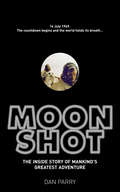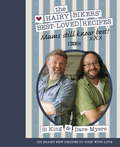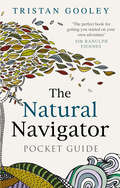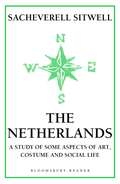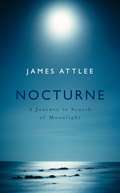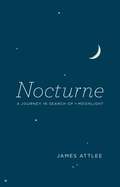- Table View
- List View
Mikoyan-Gurevich MiG-15 - Single-seat Jet Interceptor Fighter (UEB uncontracted)
by RnibThis is an image of a jet fighter aircraft seen from above. There is a locator dot shown, which will be at the top left of the page when the image is the correct way up. The image is in the centre and a scale in metres on the left of the page. The aircraft nose is in the top centre and the tail in the bottom centre of the page. The fuselage goes up and down the middle of the page. The nose of the aircraft is the intake of the jet engine. The cockpit cover is shown as four windows near the nose. To the right of the cockpit is a small aerial. The wings sweep down to the left and right. Along the front edge of the right wing is another aerial. The wings each have one aileron on the rear edge and two ridges in the middle of the wing. At the bottom of the page in the centre of the fuselage is the vertical tail. To each side of this is the tailplane. The nose, tailplane and back third of the fuselage are red. The rest of the plane is grey. The textures on the tactile image reflect structure not colour. There is a different texture for the cockpit, wings and fuselage.
Mikoyan-Gurevich MiG-21 (large print)
by RnibThis is an image of a jet fighter aircraft seen from above. There is a locator dot shown, which will be at the top left of the page when the image is the correct way up. The image is in the centre and a scale in metres on the left of the page. The aircraft nose is in the top centre and the tail in the bottom centre of the page. The fuselage goes up and down the middle of the page. Sticking out in front of the nose of the aircraft is a mid-air refuelling nozzle. The nose of the aircraft is the intake of the jet engine. The cockpit cover is shown as four windows near the nose. The wings sweep down to the left and right. Each triangular-shaped wing has two ailerons on the rear edge. At the bottom of the page in the centre of the fuselage is the vertical tail. To each side of this is the tailplane. The jet engine exhaust is between the tail wings. The textures on the tactile image reflect structure not colour. There is a different texture for wings, fuselage and engine.
Mikoyan-Gurevich MiG-21 (UEB contracted)
by RnibThis is an image of a jet fighter aircraft seen from above. There is a locator dot shown, which will be at the top left of the page when the image is the correct way up. The image is in the centre and a scale in metres on the left of the page. The aircraft nose is in the top centre and the tail in the bottom centre of the page. The fuselage goes up and down the middle of the page. Sticking out in front of the nose of the aircraft is a mid-air refuelling nozzle. The nose of the aircraft is the intake of the jet engine. The cockpit cover is shown as four windows near the nose. The wings sweep down to the left and right. Each triangular-shaped wing has two ailerons on the rear edge. At the bottom of the page in the centre of the fuselage is the vertical tail. To each side of this is the tailplane. The jet engine exhaust is between the tail wings. The textures on the tactile image reflect structure not colour. There is a different texture for wings, fuselage and engine.
Mikoyan-Gurevich MiG-21 (UEB uncontracted)
by RnibThis is an image of a jet fighter aircraft seen from above. There is a locator dot shown, which will be at the top left of the page when the image is the correct way up. The image is in the centre and a scale in metres on the left of the page. The aircraft nose is in the top centre and the tail in the bottom centre of the page. The fuselage goes up and down the middle of the page. Sticking out in front of the nose of the aircraft is a mid-air refuelling nozzle. The nose of the aircraft is the intake of the jet engine. The cockpit cover is shown as four windows near the nose. The wings sweep down to the left and right. Each triangular-shaped wing has two ailerons on the rear edge. At the bottom of the page in the centre of the fuselage is the vertical tail. To each side of this is the tailplane. The jet engine exhaust is between the tail wings. The textures on the tactile image reflect structure not colour. There is a different texture for wings, fuselage and engine.
Moon Buggy - Lunar Rover (large print)
by RnibThis is an image of the Lunar rover: the electric vehicle used by American astronauts to explore the moon in the 1960s and 70s. There is a locator dot shown, which will be at the top left of the page when the image is the right way up. The buggy is seen from the side and facing left so only two of the four wheels can be seen. Some of the on-board equipment has been shown. The buggy is set against the darkness of space. At the far left of the page is a television camera and slightly down from this is a lunar communication relay unit. To the right of this, stretching up the page is a high-gain antenna. Right again is a low-gain antenna and a 16 mm camera and power pack. A small distance down the page is the control column for the astronaut to steer the vehicle and to the right a seat seen from the side. Right again is an aft chassis pallet, which houses experiments, and a hand tool carrier. At the bottom of the page are the two visible wheels on the ground.
Moon Florida Gulf Coast: Best Beaches, Scenic Drives, Everglades Adventures (Travel Guide)
by Joshua Lawrence KinserWhether you're kayaking through mangroves, bodysurfing with manta rays, or sunbathing with a piña colada in hand, soak up the Sunshine State with Moon Florida Gulf Coast. Inside you'll find: Flexible itineraries from short beach getaways to a 10-day road trip covering all 700 miles of the Florida Gulf Coast The best spots for outdoor adventures like kayaking, hiking, biking, bird-watching, and fishing, and the best beaches for swimming, sunsets, and seclusion Top activities and unique experiences: Discover the vibrant performing arts scene in Sarasota or stroll through quaint riverfront towns and secluded island enclaves. Unwind on shell-scattered beaches, explore winding mazes of mangroves, or spot gators in the swampy Everglades. Ride the coasters at Busch Gardens, browse art galleries in Naples, or catch a college baseball game during Spring Training. Sail through the canals of Tampa, kick back at a beachfront oyster bar, and sip a local brew as the sun sets over the ocean Expert advice from Florida native Joshua Lawrence Kinser on where to stay, where to eat, and how to get around by car, bus, or boat Full-color photos and detailed maps throughoutBackground information on the Gulf Coast's landscape, wildlife, history, and culture Experience the best of Florida's Gulf Coast with Moon. For more of the Sunshine State, try Moon Florida Keys. About Moon Travel Guides: Moon was founded in 1973 to empower independent, active, and conscious travel. We prioritize local businesses, outdoor recreation, and traveling strategically and sustainably. Moon Travel Guides are written by local, expert authors with great stories to tell—and they can't wait to share their favorite places with you. For more inspiration, follow @moonguides on social media.
Moonshot: The Inside Story of Mankind's Greatest Adventure
by Dan Parry'It didn't matter that they were now three miles beyond their target site, that communications were dropping out and that they were running low on fuel. All that mattered to Neil as he searched for a safe spot to land was that boulders littered the surface below. "Thirty seconds," called mission control. In truth, the flight controllers were now no more than spectators, just like everybody else. No more needed to be said.It was down to Armstrong.'Simultaneously connected and separated by television, millions of people around the world held their breath as a human being looked back at them from the surface of the Moon. Yet who were these men capable of such an achievement? How did the passionate Buzz Aldrin, inscrutable Michael Collins and enigmatic Neil Armstrong learn to depend on one another as they endured the most intense period of their lives?From the personal tragedies and triumphs they encountered along the way to the terrifying climax of a mission that redefined humanity, Moonshot - now also a major TV factual-drama - draws on interviews with many of the leading participants and hundreds of hours of archive material to tell the compelling true story of an event that captured the imagination of generations, then and now.
Mums Still Know Best: Mums Still Know Best! (The Hairy Bikers)
by Hairy BikersThe biggest non-fiction book of spring 2011 from Hairy Bikers Si & Dave, No.1 bestselling authors and stars of BBC'S MUMS KNOWS BEST. When Hairy Bikers, Si and Dave, toured the country in search of ordinary Mums and their families' favourite recipes, they had no idea they would unearth such a wealth of talent, tradition and nostalgia. So began their search for the dishes we love best. This beautiful cookbook brings together over 100 of the nation's favourite recipes from the second series of BBC2's MUMS KNOW BEST. It includes Si and Dave's personal family recipes as well as their favourite recipes that they discover through the mums they meet and the recipe fairs they hold. Episodes include Comforting Food, High Tea, School Dinners and Al Fresco. An irresistible collection of recipes that will inspire you to keep cooking with love for the people that matter to you most.
My First Summer in the Sierra: The nature diary of a pioneering environmentalist (Barnes And Noble Digital Library)
by John Muir‘Divine beauty all. Here I could stay tethered forever with just bread and water, nor would I be lonely.’In the summer of 1869, John Muir joined a group of shepherds in the foothills of California’s Sierra Nevada mountains, that he might study and expand his knowledge of the plants, animals and rocks he found there. My First Summer in the Sierra – first published in 1911 – is the detailed and colourful diary he kept while tending sheep and exploring the wilderness.Muir’s account tracks his experiences in the Yosemite Valley and the High Sierra alongside faithful companion Carlo the St Bernard, describing the majestic landscapes and the flora and fauna of the area with the excitement and wonder of a child. From sleeping on silver-fir-bough mattresses to goading wild bears, and valuing everything from tiny pebbles to giant sequoia, he truly immerses himself and falls in love with the wilderness. Muir’s enthusiasm is infectious, and over 100 years on his environmental message is more pertinent than ever. With a new introduction from Muir authority Terry Gifford, My First Summer in the Sierra is an enchanting and informative read for anyone passionate about the natural world and its splendours.
Nairobi city map (large print)
by RnibThis page shows a map of Nairobi. There is a locator dot shown, which will be at the top left, when the image is the correct way up. The image is surrounded by an image border. The map of Nairobi fills the top half of the page. There is a small key at the bottom of the page which explains the textures used (colours in large print image). There is a scale in the bottom right of the image and a north arrow in the top left of the image. The city fills the centre of the image. The city centre is in the middle of the image and marked with a symbol. There are three shanty settlements to the left and bottom of the centre and two to the top and right. They are all on the edge of the city. A river comes from top left of the image and goes down and right to the right centre of the image. A second river comes from the left and goes across the image to the right centre of the image. Both rivers have a slightly wiggly course and areas liable to flood after heavy rain.
Nairobi city map (UEB contracted)
by RnibThis page shows a map of Nairobi. There is a locator dot shown, which will be at the top left, when the image is the correct way up. The image is surrounded by an image border. The map of Nairobi fills the top half of the page. There is a small key at the bottom of the page which explains the textures used (colours in large print image). There is a scale in the bottom right of the image and a north arrow in the top left of the image. The city fills the centre of the image. The city centre is in the middle of the image and marked with a symbol. There are three shanty settlements to the left and bottom of the centre and two to the top and right. They are all on the edge of the city. A river comes from top left of the image and goes down and right to the right centre of the image. A second river comes from the left and goes across the image to the right centre of the image. Both rivers have a slightly wiggly course and areas liable to flood after heavy rain.
Nairobi city map (UEB uncontracted)
by RnibThis page shows a map of Nairobi. There is a locator dot shown, which will be at the top left, when the image is the correct way up. The image is surrounded by an image border. The map of Nairobi fills the top half of the page. There is a small key at the bottom of the page which explains the textures used (colours in large print image). There is a scale in the bottom right of the image and a north arrow in the top left of the image. The city fills the centre of the image. The city centre is in the middle of the image and marked with a symbol. There are three shanty settlements to the left and bottom of the centre and two to the top and right. They are all on the edge of the city. A river comes from top left of the image and goes down and right to the right centre of the image. A second river comes from the left and goes across the image to the right centre of the image. Both rivers have a slightly wiggly course and areas liable to flood after heavy rain.
The Natural Navigator Pocket Guide
by Tristan GooleyStarting with a simple question - 'Which way am I looking?' - Tristan Gooley blends natural science, myth, folklore and the history of travel to introduce you to the rare and ancient art of finding your way using nature's own sign-posts, from the feel of a rock to the look of the moon.With Tristan's help, you'll learn why some trees grow the way they do and how they can help you find your way in the countryside. You'll discover how it's possible to find North simply by looking at a puddle and how natural signs can be used to navigate on the open ocean and in the heart of the city. Wonderfully detailed and full of fascinating stories, this is a glorious exploration of the rediscovered art of natural navigation.The Natural Navigator Pocket Guide is a user-friendly, practical book and the beautiful illustrations are a useful tool to help travellers on their instrument-free journey.
'Nelson and Napoleon Exhibition' Model of the HMS Victory (tactile)
by RnibThis is a side view of a 1:48 scale model of HMS Victory without the masts. The image has been labelled to help understand its orientation and to identify parts of the ship. On the image, 3 distinct textures have been used - solid raised texture, a rough texture and a very rough texture. In the descriptions, the words 'solid', 'rough' and 'very rough' have been used. The hull is painted white (very rough) with each of the 3 gun decks painted in black (solid) and yellow (rough) horizontal stripes. On the yellow stripes can be seen the portholes for the guns - the top gun deck's portholes are shown open (hollows) and the middle and lower gun decks' portholes are shown closed (small solid squares).
The Netherlands: A Study of Some Aspects of Art, Costume and Social Life
by Sacheverell SitwellSacheverell Sitwell goes beyond the generic images of Holland as all museums, windmills, canals, tulips and clogs. Sitwell leads us out of museums and away from the great cities, where tourist, and their guidebooks, usually remain cloistered. By traveling outside the usual, Sitwell has discovered a new and beautiful Holland in which 18th century architecture, strange villages and costumes of Friesland, and undiscovered artists. Sitwell's account of the Netherlands awakens anew our curiosity in this well trod country.
Nocturne: A Journey in Search of Moonlight
by James AttleeLook up into the night sky and gaze in wonder...The moon and the light it casts have been a muse for writers, artists, composers and visionaries throughout history. But today, in our increasingly urbanised world, the spread of artificial lighting seems set to rob the moon of its power.Now James Attlee invites us to turn our faces once more toward the night sky and contemplate the moon's many moods. He takes us with him on a journey in search of moonlight and its meanings, from the kitsch to the sublime - in the modern world, the ancient world, in art, books, music, and in science. And from his front door he travels to Normandy, Naples, Arizona, Wales, Las Vegas and Japan.Here, then, is a strangely illuminating traveller's tale about a search for the all-but-vanished light of the moon - and a passionate plea to turn off the lights and repossess the stolen night.
Nocturne: A Journey in Search of Moonlight
by James Attlee“Nobody who has not taken one can imagine the beauty of a walk through Rome by full moon,” wrote Goethe in 1787. Sadly, the imagination is all we have today: in Rome, as in every other modern city, moonlight has been banished, replaced by the twenty-four-hour glow of streetlights in a world that never sleeps. Moonlight, for most of us, is no more. So James Attlee set out to find it. Nocturne is the record of that journey, a traveler’s tale that takes readers on a dazzling nighttime trek that ranges across continents, from prehistory to the present, and through both the physical world and the realms of art and literature. Attlee attends a Buddhist full-moon ceremony in Japan, meets a moon jellyfish on a beach in Northern France, takes a moonlit hike in the Arizona desert, and experiences a lunar eclipse on New Year’s Eve atop the snowbound Welsh hills. Each locale is illuminated not just by the moonlight he seeks, but by the culture and history that define it. We learn about Mussolini’s pathological fear of moonlight; trace the connections between Caspar David Friedrich, Rudolf Hess, and the Apollo space mission; and meet the inventors of the Moonlight Collector in the American desert, who aim to cure all kinds of ailments with concentrated lunar rays. Svevo and Blake, Whistler and Hokusai, Li Po and Marinetti are all enlisted, as foils, friends, or fellow travelers, on Attlee’s journey. Pulled by the moon like the tide, Attlee is firmly in a tradition of wandering pilgrims that stretches from Basho to Sebald; like them, he presents our familiar world anew.
Nocturne: A Journey in Search of Moonlight
by James Attlee“Nobody who has not taken one can imagine the beauty of a walk through Rome by full moon,” wrote Goethe in 1787. Sadly, the imagination is all we have today: in Rome, as in every other modern city, moonlight has been banished, replaced by the twenty-four-hour glow of streetlights in a world that never sleeps. Moonlight, for most of us, is no more. So James Attlee set out to find it. Nocturne is the record of that journey, a traveler’s tale that takes readers on a dazzling nighttime trek that ranges across continents, from prehistory to the present, and through both the physical world and the realms of art and literature. Attlee attends a Buddhist full-moon ceremony in Japan, meets a moon jellyfish on a beach in Northern France, takes a moonlit hike in the Arizona desert, and experiences a lunar eclipse on New Year’s Eve atop the snowbound Welsh hills. Each locale is illuminated not just by the moonlight he seeks, but by the culture and history that define it. We learn about Mussolini’s pathological fear of moonlight; trace the connections between Caspar David Friedrich, Rudolf Hess, and the Apollo space mission; and meet the inventors of the Moonlight Collector in the American desert, who aim to cure all kinds of ailments with concentrated lunar rays. Svevo and Blake, Whistler and Hokusai, Li Po and Marinetti are all enlisted, as foils, friends, or fellow travelers, on Attlee’s journey. Pulled by the moon like the tide, Attlee is firmly in a tradition of wandering pilgrims that stretches from Basho to Sebald; like them, he presents our familiar world anew.
Nocturne: A Journey in Search of Moonlight
by James Attlee“Nobody who has not taken one can imagine the beauty of a walk through Rome by full moon,” wrote Goethe in 1787. Sadly, the imagination is all we have today: in Rome, as in every other modern city, moonlight has been banished, replaced by the twenty-four-hour glow of streetlights in a world that never sleeps. Moonlight, for most of us, is no more. So James Attlee set out to find it. Nocturne is the record of that journey, a traveler’s tale that takes readers on a dazzling nighttime trek that ranges across continents, from prehistory to the present, and through both the physical world and the realms of art and literature. Attlee attends a Buddhist full-moon ceremony in Japan, meets a moon jellyfish on a beach in Northern France, takes a moonlit hike in the Arizona desert, and experiences a lunar eclipse on New Year’s Eve atop the snowbound Welsh hills. Each locale is illuminated not just by the moonlight he seeks, but by the culture and history that define it. We learn about Mussolini’s pathological fear of moonlight; trace the connections between Caspar David Friedrich, Rudolf Hess, and the Apollo space mission; and meet the inventors of the Moonlight Collector in the American desert, who aim to cure all kinds of ailments with concentrated lunar rays. Svevo and Blake, Whistler and Hokusai, Li Po and Marinetti are all enlisted, as foils, friends, or fellow travelers, on Attlee’s journey. Pulled by the moon like the tide, Attlee is firmly in a tradition of wandering pilgrims that stretches from Basho to Sebald; like them, he presents our familiar world anew.
Nocturne: A Journey in Search of Moonlight
by James Attlee“Nobody who has not taken one can imagine the beauty of a walk through Rome by full moon,” wrote Goethe in 1787. Sadly, the imagination is all we have today: in Rome, as in every other modern city, moonlight has been banished, replaced by the twenty-four-hour glow of streetlights in a world that never sleeps. Moonlight, for most of us, is no more. So James Attlee set out to find it. Nocturne is the record of that journey, a traveler’s tale that takes readers on a dazzling nighttime trek that ranges across continents, from prehistory to the present, and through both the physical world and the realms of art and literature. Attlee attends a Buddhist full-moon ceremony in Japan, meets a moon jellyfish on a beach in Northern France, takes a moonlit hike in the Arizona desert, and experiences a lunar eclipse on New Year’s Eve atop the snowbound Welsh hills. Each locale is illuminated not just by the moonlight he seeks, but by the culture and history that define it. We learn about Mussolini’s pathological fear of moonlight; trace the connections between Caspar David Friedrich, Rudolf Hess, and the Apollo space mission; and meet the inventors of the Moonlight Collector in the American desert, who aim to cure all kinds of ailments with concentrated lunar rays. Svevo and Blake, Whistler and Hokusai, Li Po and Marinetti are all enlisted, as foils, friends, or fellow travelers, on Attlee’s journey. Pulled by the moon like the tide, Attlee is firmly in a tradition of wandering pilgrims that stretches from Basho to Sebald; like them, he presents our familiar world anew.
Nocturne: A Journey in Search of Moonlight
by James Attlee“Nobody who has not taken one can imagine the beauty of a walk through Rome by full moon,” wrote Goethe in 1787. Sadly, the imagination is all we have today: in Rome, as in every other modern city, moonlight has been banished, replaced by the twenty-four-hour glow of streetlights in a world that never sleeps. Moonlight, for most of us, is no more. So James Attlee set out to find it. Nocturne is the record of that journey, a traveler’s tale that takes readers on a dazzling nighttime trek that ranges across continents, from prehistory to the present, and through both the physical world and the realms of art and literature. Attlee attends a Buddhist full-moon ceremony in Japan, meets a moon jellyfish on a beach in Northern France, takes a moonlit hike in the Arizona desert, and experiences a lunar eclipse on New Year’s Eve atop the snowbound Welsh hills. Each locale is illuminated not just by the moonlight he seeks, but by the culture and history that define it. We learn about Mussolini’s pathological fear of moonlight; trace the connections between Caspar David Friedrich, Rudolf Hess, and the Apollo space mission; and meet the inventors of the Moonlight Collector in the American desert, who aim to cure all kinds of ailments with concentrated lunar rays. Svevo and Blake, Whistler and Hokusai, Li Po and Marinetti are all enlisted, as foils, friends, or fellow travelers, on Attlee’s journey. Pulled by the moon like the tide, Attlee is firmly in a tradition of wandering pilgrims that stretches from Basho to Sebald; like them, he presents our familiar world anew.
Nocturne: A Journey in Search of Moonlight
by James Attlee“Nobody who has not taken one can imagine the beauty of a walk through Rome by full moon,” wrote Goethe in 1787. Sadly, the imagination is all we have today: in Rome, as in every other modern city, moonlight has been banished, replaced by the twenty-four-hour glow of streetlights in a world that never sleeps. Moonlight, for most of us, is no more. So James Attlee set out to find it. Nocturne is the record of that journey, a traveler’s tale that takes readers on a dazzling nighttime trek that ranges across continents, from prehistory to the present, and through both the physical world and the realms of art and literature. Attlee attends a Buddhist full-moon ceremony in Japan, meets a moon jellyfish on a beach in Northern France, takes a moonlit hike in the Arizona desert, and experiences a lunar eclipse on New Year’s Eve atop the snowbound Welsh hills. Each locale is illuminated not just by the moonlight he seeks, but by the culture and history that define it. We learn about Mussolini’s pathological fear of moonlight; trace the connections between Caspar David Friedrich, Rudolf Hess, and the Apollo space mission; and meet the inventors of the Moonlight Collector in the American desert, who aim to cure all kinds of ailments with concentrated lunar rays. Svevo and Blake, Whistler and Hokusai, Li Po and Marinetti are all enlisted, as foils, friends, or fellow travelers, on Attlee’s journey. Pulled by the moon like the tide, Attlee is firmly in a tradition of wandering pilgrims that stretches from Basho to Sebald; like them, he presents our familiar world anew.
North South Divide of the World (tactile)
by RnibThis is a tactile diagram for GCSE level students. It covers two pages: the first page is a key where tactile symbols and labels are explained, the second page is a map of the world with a line showing the North/South divide.
Northern Europe template map (large print)
by RnibThe UK and Ireland are in the bottom left of the page. Iceland is in the top left of the page. Mainland Europe is on the right of the page.
Northern Europe template map (tactile)
by RnibThe UK and Ireland are in the bottom left of the page. Iceland is in the top left of the page. Mainland Europe is on the right of the page.


